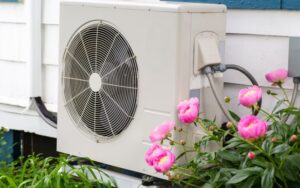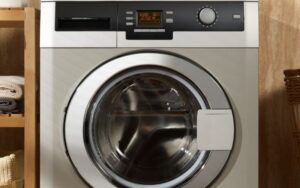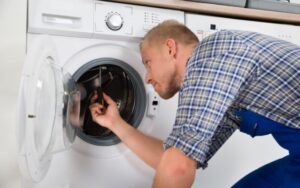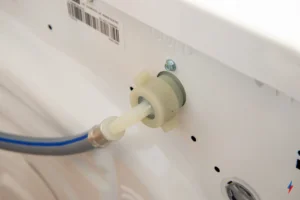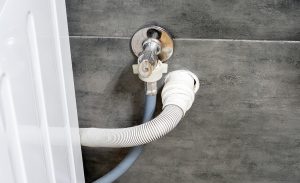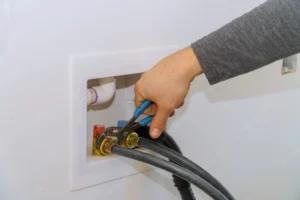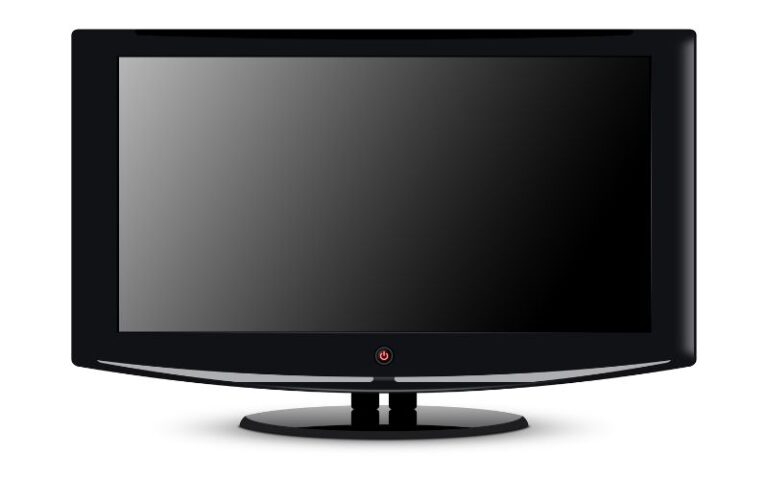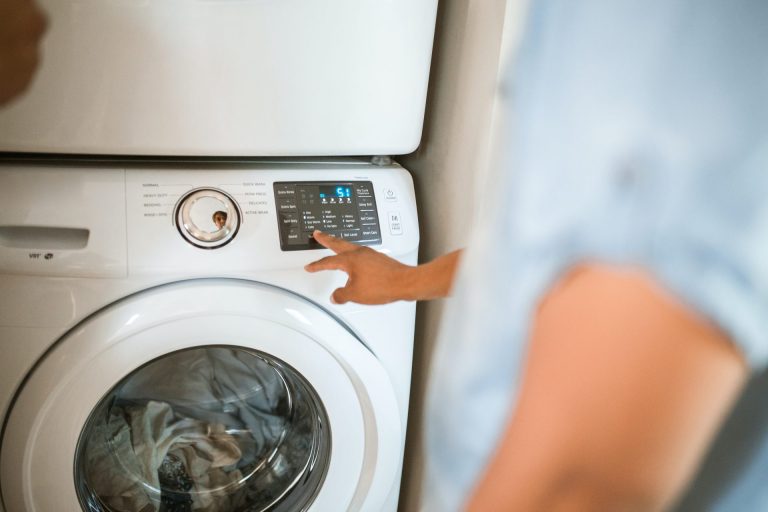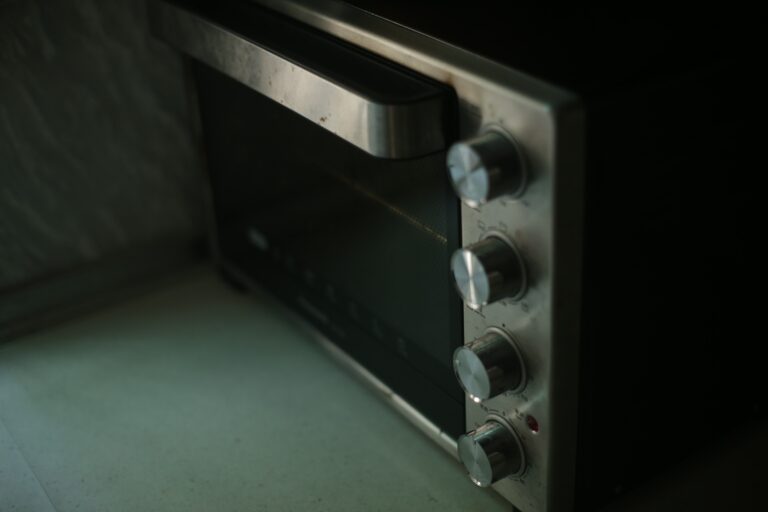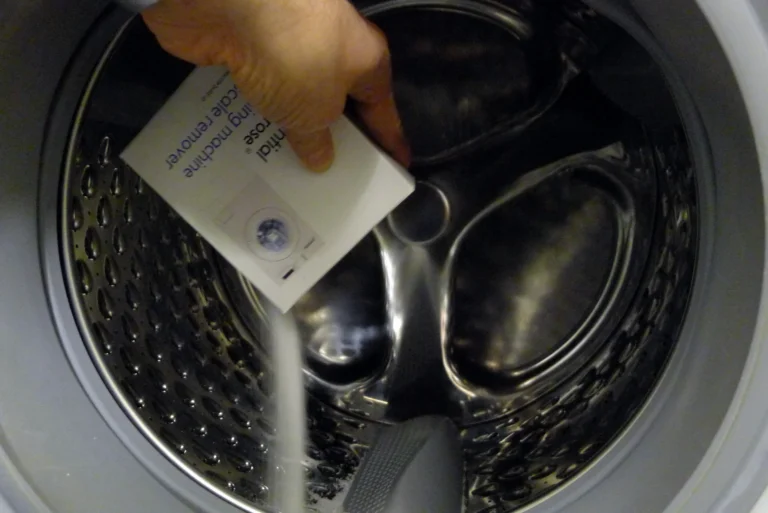Are Washing Machine And Dishwasher Hoses The Same?
Washing machines and dishwashers both have hoses for supplying and draining water. These hoses seem like good alternatives for each other as they perform similar functions.
You may use one for the other at some point. However, you can’t help but wonder why the hoses have different store sections when they perform the same function.
That brings you to the question; are washing machines and dishwasher hoses the same?
The washing machine and dishwasher hose are different. The hoses look the same and would probably fit if interchanged, but they have key differences. The diameter of the dishwasher and washing machine hoses is to accommodate the water pressure required to function.
This article will give you more details on washing machines and dishwasher hoses. You’ll also learn more about why you can’t interchange the hoses.
What Type of Hose Do Washing Machines Use?
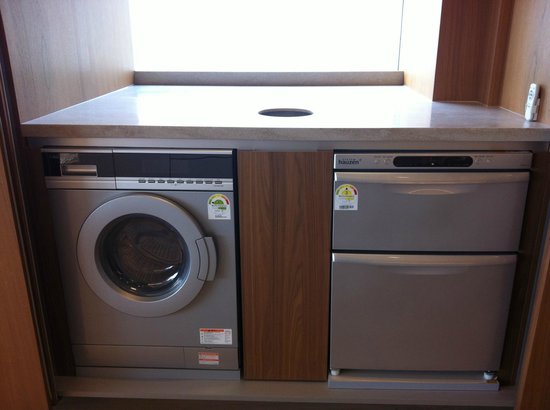
There are different types of hoses that a washing machine can use. These various types of hose vary in terms of durability.
Here are some common types of washing machine hoses:
#1. Reinforced Rubber Hose
Here are the desirable features of hoses made with reinforced rubber:
- Reinforced rubber hoses are affordable.
- Reinforced rubber hoses have braided rayon or polyester mesh that makes the rubber stronger and protects it from withering.
Although hoses made of reinforced rubber are good options for your washing machine, you shouldn’t use them if your washer is inside the house.
Reinforced rubber hoses are known for their likeliness to burst, and having that in your house can cause a mess.
#2. Stainless Steel Hose
Here are the desirable features of hoses made with braided stainless steel rubber:
- The stainless steel protects the hose against bursts due to high water pressure
- Stainless steel hoses are very affordable.
- Stainless steel hoses with auto-shutoff function sense when water pressure increases, probably because of a burst, and signal the connector to stop the water flow.
Here is a table highlighting the differences between stainless steel and rubber hoses.
| Stainless Steel Hose | Reinforced Rubber Hose |
|---|---|
| Made of stainless steel | Made of rubber |
| Has a higher resistance against burst | Has a lower resistance against burst |
If you buy a washing machine hose made of stainless steel or rubber.
Here’s how to remove the hoses and correctly install the new ones:
- First, cut off the power of the washer machine and unplug the machine from the outlet.
- Carefully move your washing machine away from the wall and then turn off the water supply at the valves.
- After turning off the water supply, use a clean towel to remove the hoses from the back of the washing machine.
- Use a bucket to drain out the excess water.
- Use a plier to loosen the hoses’ grip and then remove the hoses from the water supply valve.
- Plug in the new hoses gently and tighten the fitting properly, then go further to secure the grip with a plier.
- Note that the red hose goes for the hot water valve, and the blue hose goes for the cold water valve.
- Turn on the water supply valve to allow water to flow through the hoses and observe if there are any leaks.
- After testing for leaks, you switch the power to the washing machine.
Regardless of the type of hose you use for your washing machine, it is important to change it every 3-5 years.
Using a hose for too long can cause wear and tear, create leaks, and slowly increase the likelihood of the hose bursting.
Here are some important maintenance tips for any hose installed in your washing machine:
- Turn off the water supply when not in use. When water frequently flows through the hose, especially when the pressure is high, it can cause wear and tear to the hose.
- Get a professional to install a water hammer arrestor for the hose. A water hammer arrestor helps to absorb the shock that comes with the high pressure of water flowing.
- If you need to change your hose and need more confidence in properly fitting it, get a professional to do it for you.
- Get a washing machine leak detector to check for leaks on your hose.
- Check your hose frequently to see if it is bent, twisted, or starting to rust. If you notice that your hose is starting to rust, that’s a sign for you to get a new one.
Can You Use Washing Machines And Dishwasher Hoses Interchangeably?
No, you can not use a dishwasher and washing machine hose interchangeably.
The hose for your washing machine and dishwasher might be similar, but they differ.
One major difference between dishwasher and washing machine hoses is their different diameters.
The diameter of dishwasher hoses is usually smaller than that of washing machine hoses.
This diameter difference is because washing machines require a high water pressure flow for their washing operations.
If you install your dishwashing hose in your washing machine, the water pressure flow will be very slow. You’d waste too much time waiting for the drum in your washer to fill up.
You can install your washing machine hose in your dishwasher, and the water pressure will be normal, but I recommend sticking your usual food-grade piping hose for your dishwasher.
Are Supply And Drain Hoses the Same For Washing Machine And Dishwashers?
The supply and drain hose for your washing machine and dishwasher are similar, but you can observe a difference.
A dishwasher’s supply and the drain hose are designed with a small diameter because it does not require high water pressure to facilitate their functions.
On the other hand, washing machine hoses have a large diameter to accommodate high water pressure.
If you try to switch your dishwasher’s hose with your washing machine hose, the water pressure would remain normal but doing this is not recommended.
However, if you try to switch your washing machine’s hose with a dishwasher’s hose, it might fail to work out.
A dishwasher’s hose cannot accommodate the high water pressure that the washing machine needs to function properly.
Forcing a high water pressure to flow through the dishwasher’s hose may cause it to burst or lose strength at the very least.
You May Also Like To Read
- 3 Reasons Your Heat Pump Sounds Like A Washing Machine!
- 4 Reasons That Washing Machines Are in The Kitchen!
- 4 Reasons Your Lights Flicker When Washer is On!
- 5 Reasons Your Whirlpool Washer Stuck On Sensing Or Wash Cycle!
- 8 Steps To Remove Inlet Screen from Maytag Washing Machine!
- Are Liquid Tabs Bad For Washing Machines? (Let’s Find out)

